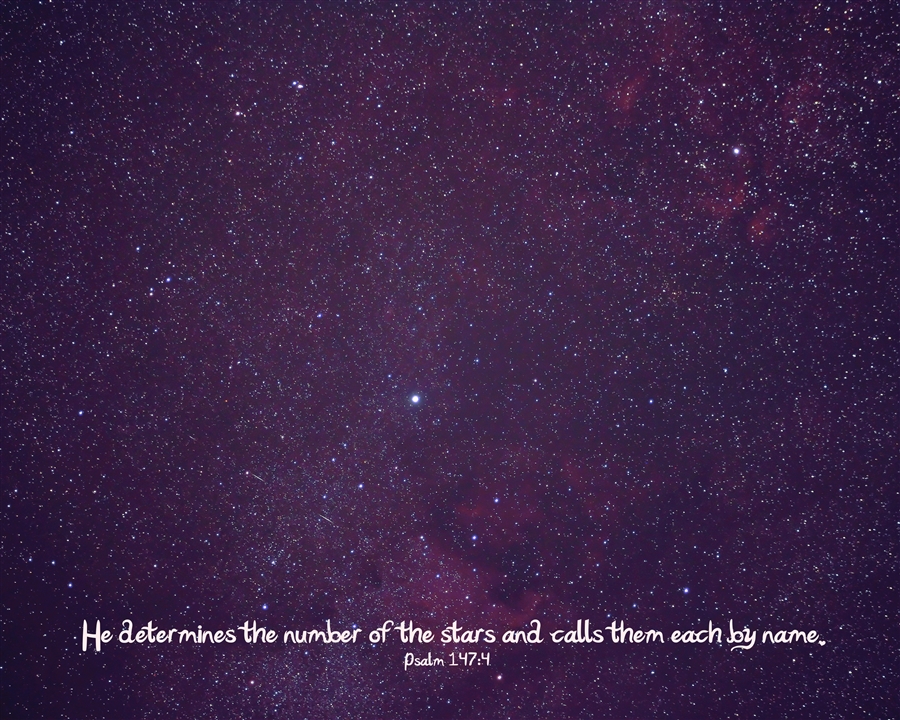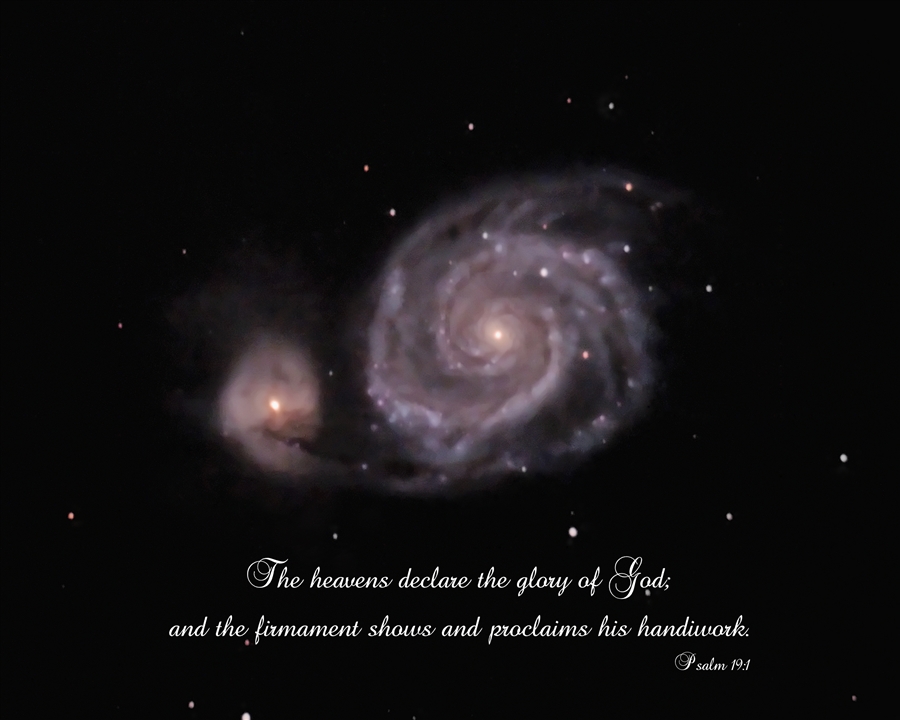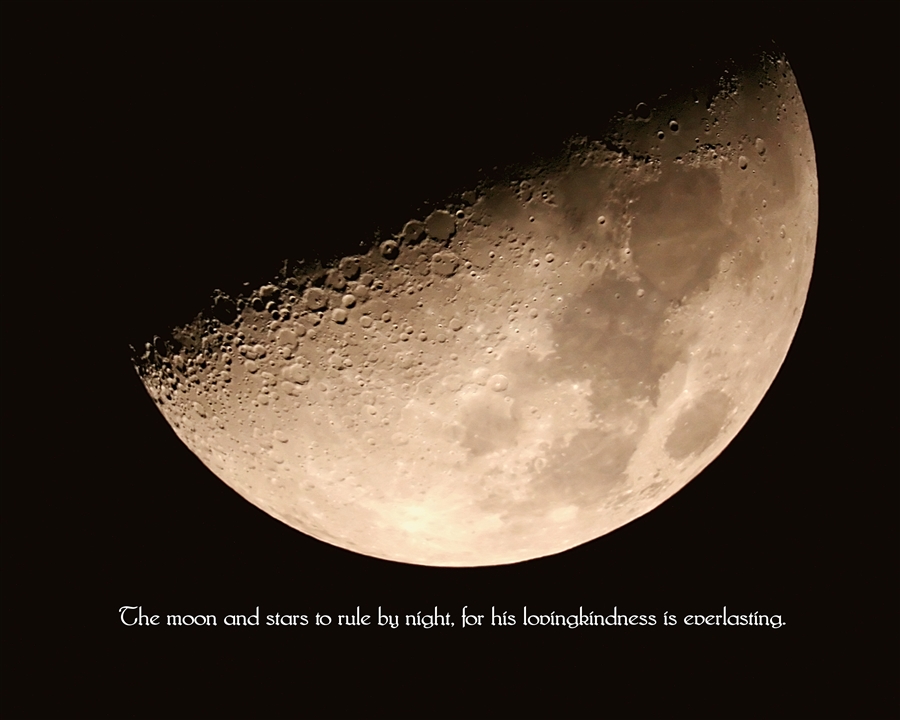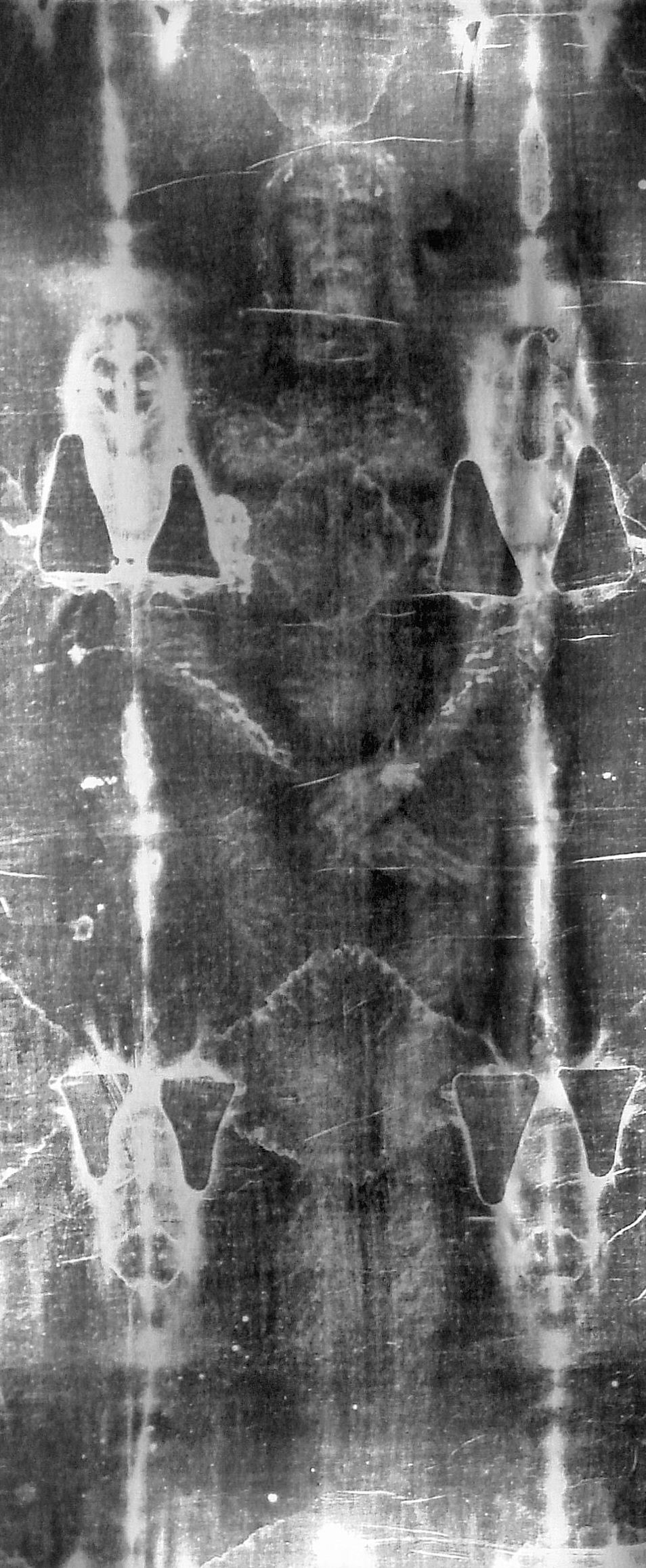Basis of Belief...
After the Earth cooled, there was water, rock, dirt and mud. Not a microbe of life existed.
If we, life, arose by accident, we are nothing more than conscious clay, dirt and rock from the ground, that against all odds, combined thoroughly by accident in just such a way to create a beating heart, sight, love and the need for electric refrigerators.
With nature as the only resource, it's an an inexplicable miracle, unduplicated in any lab.
Dirt became us. Either we are conscious clay in a way that no one can explain, or we are infinitely more.

Introduction
I was raised in a Christian home and believing in God most of my life, I made the conscious decision to accept Jesus Christ as my Savior in my early 20s. I was aware of the seeming disconnects between the scriptures and science, but in my youth I was able to set those discrepancies aside.
Wanting to believe a thing doesn’t make it so. Later, especially when I started writing software, the nagging disconnects kept resurfacing and challenging my belief. Most of all, I want to believe the truth. If the truth is that accurate science precludes God’s existence, I had to accept that.
If God exists, then accurate science and Scripture should be in harmony. Science should support the existence of God. Scripture encourages us to seek God through the evidence of our physical world. Psalm 19 vs. 1 says, “The Heavens declare the glory of God; and the firmament shows and proclaims His handiwork.” Romans 1 vs. 20 tells us that God’s eternal power and divine nature can be seen and understood through things that are made. The seeming discord had to be resolved.
I am a software developer and business manager. I am not a scientist. What I knew of evolution and naturalism was learned in high school in the 70s, college in the early 80s and from the occasional program on TV thereafter. Forever is a very long time. I was not about to risk the implications on 30 year old data. It was time to dig into the latest books and Internet resources, and see if modern science and God could be reconciled.
What I have learned has far exceeded my expectations. When I started this project, my hope was to build a reasonable harmony between science and Scripture and to find objective evidence to support a living God. There are many resources yet to explore, but what I have discovered already goes beyond reasonable harmony of science and scripture to what I consider a convincing case for the God of the Christian Bible and Jesus Christ, his Son.
There are many authors that have written wonderful books on this subject. The intent of this web page is not to cover all the material in complete detail. What follows is a very brief summary of the highlight issues that can serve as a launching point for further investigation. It is a work in progress, and there is much yet to learn. Additionally, all insights and references from visitors to this page are very welcome and appreciated.
Basis of Belief...
The Big Bang

Why is there not nothing? Bill Bryson wrote in A Short History of Nearly Everything, “In three minutes, ninety-eight percent of all the matter there is or will ever be has been produced. It is a place of the most wondrous and gratifying possibility and beautiful, too. And it was all done in about the time it takes to make a sandwich.”
That the universe began in an instant is now widely accepted. “In the beginning there was an explosion,” wrote Nobel Prize - winning physicist Steven Weinberg in his book The First Three Minutes. “Not an explosion like those familiar on Earth, starting from a definite center and spreading out to engulf more and more of the circumambient air, but an explosion which occurred simultaneously everywhere, filling all space from the beginning with every particle of matter rushing apart from every other particle.”
If you hear a door slam, you would wonder what caused that, especially if you didn’t even have a door there a moment before. You wouldn’t accept that it just slammed of its own accord. What caused the universe to leap into existence? Could this have been an event without a cause? To assume that the Big Bang event was without cause is to detour from the disciplines of science and logic. For any event to occur, for anything that begins to exist, there must be a cause.
The Big Bang event tells us several things about its cause. William Lane Craig, PhD, ThD tells us in The Case for a Creator by Lee Strobel that, “A cause of space and time must be uncaused, beginningless, timeless, spaceless, immaterial personal being endowed with freedom of will and enormous power.”
If everything that comes into being has a cause, what caused the Creator? The answer is that the Creator did not come into being but has always been. The Creator is the first cause.
The Anthropic Principle

Alister McGrath, a theologian who studied molecular biophysics at Oxford, asks, “Is it a pure coincidence that the laws of nature are such that life is possible? Might this not be an important clue to the nature and destiny of humanity?”
Physicist Paul Davies wrote in God and the New Physics that, “It is rather hard to resist the impression that the present structure of the universe, apparently so sensitive to minor alterations in numbers, has been rather carefully thought out… The seemingly miraculous concurrence of these numerical values must remain the most compelling evidence for cosmic design.”
In 1973, at a scientific conference, Cambridge physicist Brandon Carter delivered a paper entitled “Larger Number Coincidences and the Anthropic Principle in Cosmology”. The paper describes the amazing and unlikely occurrence that the unrelated and arbitrary constants in physics are the precise values required for a life producing universe.
Here are just a few “coincidences”:
- A one percent change in the strong nuclear force would have between a thirty and one thousand fold impact on the production of oxygen and hydrogen in stars.
- Imagine a ruler the size of the universe in one inch increments. The strength of gravity is at the low edge and the strength of the strong nuclear force is at the high edge. If you increase the strength of gravity just on inch, life could not be supported.
- The fine tuning of the cosmological constant - the energy density of empty space required for a life producing universe - is estimated to be at least one part in one hundred million billion billion billion billion billion.
- Water is unique among molecules in that it is lighter in its solid form than in liquid form. If it weren’t, the oceans would freeze from the bottom up and the entire planet would be covered with ice.
- Increase the mass of the neutron by about one part in seven hundred, and nuclear fusion in stars would stop.
- If the electromagnetic force were slightly stronger or weaker, then life in the universe would be impossible.
- According to Oxford physicist Roger Penrose, the “original phase-space volume,” required fine-tuning to an accuracy of one part in ten billion multiplied by itself one-hundred and twenty three times!
I have often heard the argument that with billions of galaxies each containing billions of stars, there must be ample opportunity for life. Keep in mind that the anthropic principles are universal and apply everywhere in our universe. There was only one chance for all of them to be just right. The likelihood that the values we find in our universe that support life occurred by random chance is staggeringly low. The logical conclusion is that the universe was intelligently designed for life.
The Creation

Before I began my study, one of the biggest challenges was reconciling a literal interpretation of Genesis with what we now know about the age of creation. I couldn't get though page one (the first half of the first chapter of Genesis) without thinking that the scriptures weren't credible. The stumbling block was time. Is the 24-hour day the most reasonable interpretation in the Genesis account?
In his book A Matter of Days, astronomer Hugh Ross addresses this issue head on. The Hebrew word yom has the same meaning as "day" in English. It can mean the daylight portion of a day, a 24-hour period, a time of undesignated length or a day of celebration. Dr. Ross’ case that the days in Genesis 1 should be interpreted as long periods of undesignated length is compelling. When both scripture and science are interpreted properly, they are in accord. Each helps us understand the other, and both reveal our Creator.
Not only is the time issue resolved, but the match of the Genesis account to the fossil record adds credibility that our Creator did indeed communicate information to the author of Genesis. The fossil record was of course unknown when Genesis was written.
Also noteworthy is that God delineated each age with the words “and there was evening and there was morning”. These words are absent from the description of the seventh day, indicating that the day of God’s creative rest continues through today. Indeed, there have not been any new species introduced since man has arrived, though many species have become extinct.
Life

Bruce Alberts, President, National Academy of Sciences writes, "We have always underestimated the cell.... The entire cell can be viewed as a factory that contains an elaborate network of interlocking assembly lines, each of which is composed of a set of large protein machines.... Why do we call [them] machines? Precisely because, like machines invented by humans to deal efficiently with the macroscopic world, these protein assemblies contain highly coordinated moving parts."
Many of us learned about the Miller experiment in high school. In this experiment, electricity was passed through what was thought to be the composition of the early atmosphere. The results were the production of two or three of the protein forming amino acids - the building blocks of life - out of the twenty-two that exist. The implication of the “success” of this experiment was that there could be a naturalistic explanation for our existence.
In the years following this experiment, science has concluded that the atmosphere was nothing like the one that Miller simulated. Two leading origin-of-life researchers, Klaus Dose and Sidney Fox, confirmed that Miller had used the wrong gas mixture. In 1995, Science magazine said that experts now dismiss Miller's experiment because "the early atmosphere looked nothing like the Miller-Urey simulation". In fact, if you repeat the experiment using what is now thought to be an accurate atmosphere, the results are the creation of organic compounds such as Formaldehyde and Cyanide, not life creating compounds.
Even if Miller had been right, amino acids are still a long way from a truly living organism. Stephen C. Meyer, PhD, tells us in The Case for a Creator that, "Even a simple protein molecule, or the gene to build that molecule, is so rich in information that the entire time since the Big Bang would not give you - the 'probabilistic resources' you would need to generate that molecule by chance.
"There's a minimal complexity threshold..... Run the odds of these things falling into place on their own, and you find the probabilities of forming a rather short functional protein at random would be one chance in a hundred thousand trillion, trillion, trillion, trillion, trillion, trillion, trillion, trillion, trillion, trillion. That's ten with 125 zeroes after it! And that would only be one protein molecule - a minimally complex cell would need between three hundred and five hundred protein molecules.
"Plus, all of this would have to be accomplished in a mere 100 million years, which is the approximate window of time between the earth cooling and the first microfossils we've found. To suggest chance against these odds is really to invoke a naturalistic miracle. It's a confession of ignorance. It's another way of saying, 'We don't know'. And since the 1960s, scientists, to their credit, have been very reluctant to say that chance played any significant role in the origin of DNA or proteins, even though it is still unfortunately alive in popular thinking."
There is no credible naturalistic explanation for the formation of life. This scientific evidence points powerfully to the existence of a Creator.
Variety of Life

Evolution is often cited as an explanation for the variety and complexity of life. Even if evolution were proven true, it wouldn't account for the original creation of life or preclude the existence of God; however, scientific evidence is pointing away from evolution as a likely hypothesis.
To be clear, the type of evolution we are talking about is macro evolution - where life began millions of years ago with simple, single celled creatures, and then by gradual mutation and natural selection developed into all the complex varieties of plant and animal life that now populate the planet.
Charles Darwin himself raised concern in Origin of Species over the lack of fossil evidence for transitional forms, which he said, "…is the most obvious and serious objection" to his theory. He believed future discoveries would prove his theory correct.
They haven't. Jonathan Wells, PhD, PhD tells us in The Case for a Creator that, "Fossil discoveries over the last one hundred and fifty years have turned [Darwin's] tree upside down by showing the Cambrian explosion was even more abrupt and extensive than scientists once thought".
"The Cambrian was a geological period that we think began a little more than 540 million years ago. The Cambrian explosion has been called the 'Biological Big Bang' because it gave rise to the sudden appearance of most of the major animal phyla that are still alive today, as well as some that are now extinct."
"This is absolutely contrary to Darwin's Tree of Life. These animals, which are so fundamentally different in their body plans, appear fully developed, all of a sudden, in what paleontologists have called the single most spectacular phenomenon of the fossil record."
A second obstacle to evolution is that some organs are irreducibly complex. In Origin of Species, Darwin said, "If it could be demonstrated that any complex organ existed which could not possibly have been formed by numerous, successive, slight modifications, my theory would absolutely break down." An irreducibly complex organ is one that has different components that all work together. Remove one of the components and the system would no longer function.
We now know that irreducibly complex organs do exist. Examples of irreducible complexity include blood clotting and Cilium.
The evidence of science reveals that there is not a naturalistic explanation for the variety and complexity of life. This evidence points strongly towards the existence of a Creator.
Credibility of Scripture
If there is a God, how do we know that it is the God of the Christian Bible? Does Scripture itself strengthen the case for the existence of a Creator? After all, the Bible was written by humans, how can we even know it is credible?
The Christian Bible is either accurate or fiction. Please consider the following to decide which:
Legend and Folklore:
There wasn’t time for the story of Jesus to develop as a legend. Craig Bloomberg, one of the countries foremost authorities on the biographies of Jesus tells us in The Case for Faith that, “Within the first two years after his death, significant numbers of Jesus’ followers seem to have formulated a doctrine of atonement, were convinced that He had been raised from the dead in bodily form, associated Jesus with God, and believed they found support for all of these convictions in the Old Testament”.
Archaeological Evidence:
John McRay, PH.D., and author of the 432 page textbook entitled Archaeology and the New Testament tells us in The Case for Faith that, “There’s no question that archaeological findings have enhanced the New Testament’s credibility. No discovery has ever disproved a biblical reference. Further, archaeology has established that Luke, who wrote about one-quarter of the New Testament, was an especially careful historian.”
One of many examples offered is John’s Gospel, which at one time was considered suspect because he spoke of locations that couldn’t be verified. McRay tells us in The Case for Christ, “For example, John 5: 1-15 records how Jesus healed an invalid by the Pool of Bethesda. John provides the detail that the pool had five porticos. For a long time people cited this as an example of John being inaccurate, because no such place had been found. But more recently the Pool of Bethesda has been excavated - it lies maybe forty feet below ground - and sure enough, there were five porticos, which means colonnaded porches or walkways, exactly as John had described.”
Corroborative Evidence:
There is corroborative evidence for the life, death and resurrection of Jesus outside of the Bible. Lee Strobel tells us in The Case for Faith that, “One expert documented thirty-nine ancient sources that corroborate more than one hundred facts concerning Jesus’ life, teachings, crucifixion and resurrection.” Authors include the first century historian Josephus, born in A.D. 37 with references to Jesus in The Antiquities and Testimonium Flavianum and first century Russian historian Tacitus.
The Attributes of God:
In The Case for Faith, Lee Strobel tells us that, “The New Testament specifically confirms that Jesus ultimately possessed every qualification of deity including omniscience, omnipresence, eternality and immutability."
Fulfilled Messianic Prophesies:
Fulfilled Messianic prophesies, - prophecies about the life of Jesus - foretold in the Old Testament and fulfilled in the New Testament, tie the two books together. Fulfilled prophecy is very powerful evidence when it is detailed enough to preclude coincidence. It confirms an all-knowing God, the Christian Bible and the identity of Jesus Christ. There are hundreds of prophecies that have been fulfilled, some of which are quite detailed. There is a record of a complete translation of the Old Testament prior to Jesus’ birth confirming the prophecies were written prior to his life.
Here are just a few examples of the many Old Testament prophecies that Jesus fulfilled:
Be born of a woman - Genesis 3:15, written 1,445 B.C. (The Messiah's arrival through human birth is the key point)
Be born in Bethlehem - Micah 5:2, written 700 B.C.
Be heir to King David's throne - 2 Samuel 7:12 - 13, written 1011 - 1004 B.C.
Declared the Son of God - Psalm 2:7, written 1,000 B.C.
Entered Jerusalem on a donkey - Zechariah 9:9, written 520 - 518 B.C.
Betrayed for 30 pieces of silver - Zechariah 11:12, written 520 - 518 B.C.
Have his price given for a potter’s field - Zechariah 11:13, written 520 - 518 B.C.
Gall and vinegar being given him to drink - Psalm 69:21, written 1,000 B.C.
No bones broken - Psalm 34:20, written 1,000 B.C.
His side pierced - Zechariah 12:10, written 520 - 518 B.C.
Buried with the rich - Isaiah 53:9, written 740 - 680 B.C.
His resurrection - Isaiah 53:11, written 740 - 680 B.C. (also Psalm 16:10 and Psalm 49:15)
According to Louis S. Lapidesm, M.DIV., TH.M. in The Case for Christ, coincidence is not a reasonable explanation. “The odds are so astronomical that they rule that out. Someone did the math and figured out that the probability of just eight prophecies being fulfilled is one chance in one hundred million billion. That number is millions of times greater than the total number of people who’ve ever walked the planet!”
Jesus Christ fulfilled all of these and many other prophecies. For this to occur, God had to know the future and then communicate it to human beings. Both testaments of the Christian Bible receive tremendous credibility as the text documenting the communication. The identity of Jesus Christ as God’s Son is solidly confirmed.
The Behavior of the Disciples:
The disciples witnessed Jesus perform miracles, be put to death and his subsequent resurrection. He appeared to them individually and to more than 500 at one time (1 Corinthians 15). Specific individuals are cited who witnessed the risen Christ. Paul challenged doubters of the time to personally talk with these individuals.
In The Case for Christ, J.P. Moreland, PH.D. tells us, “When Jesus was crucified, his followers were discouraged and depressed. They no longer had confidence that Jesus had been sent by God. They also had been taught that God would not let his Messiah suffer death. So they dispersed. The Jesus movement was all but stopped in its tracks.
“Then, after a short period of time, we see them abandoning their occupations, regathering and committing themselves to spreading a very specific message – that Jesus Christ was the Messiah of God who died on a cross, returned to life and was seen alive by them.
“And they were willing to spend the rest of their lives proclaiming this, without any payoff from a human point of view. It’s not as though there was a mansion awaiting them on the Mediterranean. They faced a life of hardship. They often went without food, slept exposed to the elements, were ridiculed, beaten and imprisoned. And finally, most of them were executed in torturous ways.
“For what? For good intentions? No, because they were convinced beyond a shadow of a doubt that they had seen Jesus Christ alive from the dead. What you can’t explain is how this particular group of men came up with this particular belief without having an experience of the resurrected Christ.”
“The apostles were willing to die for something they had seen with their own eyes and touched with their own hands. They were in a unique position not to just believe Jesus rose from the dead but to know for sure. And when you’ve got eleven credible people with no ulterior motives, with nothing to gain and a lot to lose, who all agree they observed something with their own eyes – now you’ve got some difficulty explaining that away.”
People will die for their religious beliefs if they sincerely believe they are true, but people won’t die for their beliefs if they know that they are false. The apostles were in a unique position to know if the beliefs they professed were false. Their behavior is powerful evidence that what they professed is true.
Remaining Physical Evidence Today
The Shroud of Turin, or burial cloth of Jesus, displays the negative image of markings of a crucified man that match perfectly with biblical accounts. For a time, dating of the cloth appeared to indicate the origins of the cloth were more recent than 33 AD, however, updated analysis conducted by Giulio Fanti in 2013 concluded that the Shroud ranged in age from 280 BC to 220 AD with a 95 percent confidence level. This article details 5 reasons why the Shroud of Turin should be seriously considered as physical evidence of the resurrected Jesus Christ.
Near Death Experiences
Patrick Glynn in God the Evidence tells us that, “In a quarter century, near death research has produced an enormous body of data that no one honestly interested in rationally evaluating the existence of God can afford to ignore. It is difficult to analyze this evidence in depth and to come away with any other impression but that science has indeed stumbled on data of the soul”.
This National Institute of Health study entitled Near-Death Experiences Evidence for Their Reality determined that "Multiple lines of evidence point to the conclusion that near-death experiences are medically inexplicable and cannot be explained by known physical brain function." During near death experiences, reports from those who experienced drifting outside their bodies included detailed information that could not have been otherwise gathered. Patients describe in detail the operation, who was in the room, etc.
Descriptions also include traveling through a tunnel, encountering deceased loved ones, a heavenly landscape, a “Being of Light” that conveys a powerful, unearthly, unconditional love and a “life review”. Colors are described as vivid and unearthly. The light emanating from the being did not hurt their eyes even though it was many times brighter than anything they had ever seen. Others report an entirely different, “hellish” experience.
My previous pastor, who I knew for over 20 years, had a near death experience during a bus accident. She is a very intelligent and credible individual. She describes seeing a Being of Light and Christ. She often reminded us that there is much more to life than what we now see. She firmly believes that she has seen it with her own eyes. I believe that she has.
Based on the Evidence
How can you know that God exists? It is a matter of evidence, and the case is exceedingly strong.
First of all you are alive, reading these words. For you to take a single breath without God:
- Our universe would have had to come into being from nothing and without cause. You would then have to win multiple lotteries against incredible odds including:
- A universe that just happened to have the right properties to support life.
- Random particles that just happened to arrange in a manner that caused life to arise from lifelessness.
- The development of complex life forms.
To reject God’s existence, you must:
- Offer a reasonable explanation for the fulfillment of detailed scriptural prophecy.
- Counter the evidence for the life, death and resurrection of Jesus Christ.
If your only knowledge of me is this document, how do you know that I exist? You may have never seen me or heard my voice. There is a small probability of a computer glitch that caused your web browser to malfunction and somehow display a web page. There is also a probability, however small, that another glitch caused the generation of random characters that just happened to spell words. These words were by chance grouped into sentences, and these sentences coincidentally conveyed thoughts and ideas.
I'm guessing that you are not going to accept the “glitch” hypothesis as an explanation for this web page. The overwhelming improbability that this page has occurred by random chance, and your understanding of the world has led you to the conclusion that I exist.
Science has demonstrated that a random chance explanation for the existence of the universe and life is much less likely than a random chance explanation for this web page. The evidence offers a compelling case that God exists; the universe is designed; Jesus is who he says he is; science and Scripture are in accord, and the implications are personal.
Making it Personal
If you accept the evidence that an intelligent Creator designed the universe for your life, that Jesus Christ is the Creator’s Son, and that the Scriptures are true, the personal implications are amazing. God is immensely powerful, grand beyond imagination and yet personally interested in each and every one of us. So much so that through Jesus Christ he has given us a path for eternal life of unimaginable fullness.
There has already been one creation. There will also be a second creation. Revelation 21 vs. 1-7 tells us:
“Then I saw a new heaven and a new earth; for the first heaven and the first earth passed away, and there is no longer any sea. And I saw the holy city, new Jerusalem, coming down out of heaven from God, made ready as a bride adorned for her husband.
And I heard a loud voice from the throne, saying, "Behold, the tabernacle of God is among men, and He will dwell among them, and they shall be His people, and God Himself will be among them, and He will wipe away every tear from their eyes; and there will no longer be any death; there will no longer be any mourning, or crying, or pain; the first things have passed away."
And He who sits on the throne said, "Behold, I am making all things new." And He said, "Write, for these words are faithful and true." Then He said to me, "It is done. I am the Alpha and the Omega, the beginning and the end. I will give to the one who thirsts from the spring of the water of life without cost. He who overcomes will inherit these things, and I will be his God and he will be My son.”
There are many discussions of the nature of our God, why sin is so abhorrent to Him, and how none of us are worthy or able to be part of the wonderful and amazing future with God on our own. The bottom line however is clear. Jesus tells us in John 3 vs. 16 - 18, “For God so loved the world that he gave his one and only Son, that whoever believes in him shall not perish but have eternal life. For God did not send his Son into the world to condemn the world, but to save the world through him. Whoever believes in him is not condemned, but whoever does not believe stands condemned already because he has not believed in the name of God's one and only Son.”
The apostle Paul writes in Romans 10 vs. 9, 10:
“That if you confess with your mouth, “Jesus is Lord,” and believe in your heart that God raised him from the dead, you will be saved. For it is with your heart that you believe and are justified, and it is with your mouth that you confess and are saved.”
If you believe that God exists, but have never acknowledged the saving works of Jesus Christ for your reconciliation with God, I invite you to pray something along the lines of:
God, I confess that I am a sinner. I believe that the Lord Jesus Christ died for my sins on the cross and was resurrected from the dead. I do now receive and confess him as my personal savior.
Assurance

Jesus tells us in John 5 vs. 24, “I tell you the truth, whoever hears my word and believes him who sent me has eternal life and will not be condemned; he has crossed over from death to life.”
Thanks for reading my Basis for Belief. I would love to hear any input or answer any questions that you may have. Please feel free to e-mail me here:

This beautiful, amazing song, So Will I (100 Billion X) (Lyric Video Hillsong United), perfectly captures the heart behind creation and science. I invite and encourage you to give it your full screen and your full attention.
Thanks and God bless,
Scott
![]()
Copyright 1997-2025, N3FJP Software - Affirmatech, Inc
